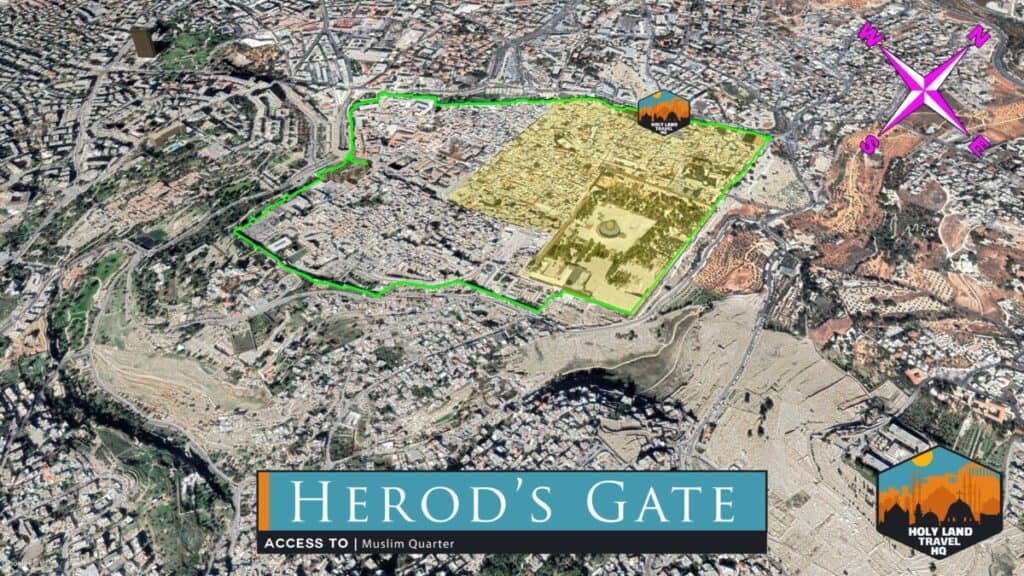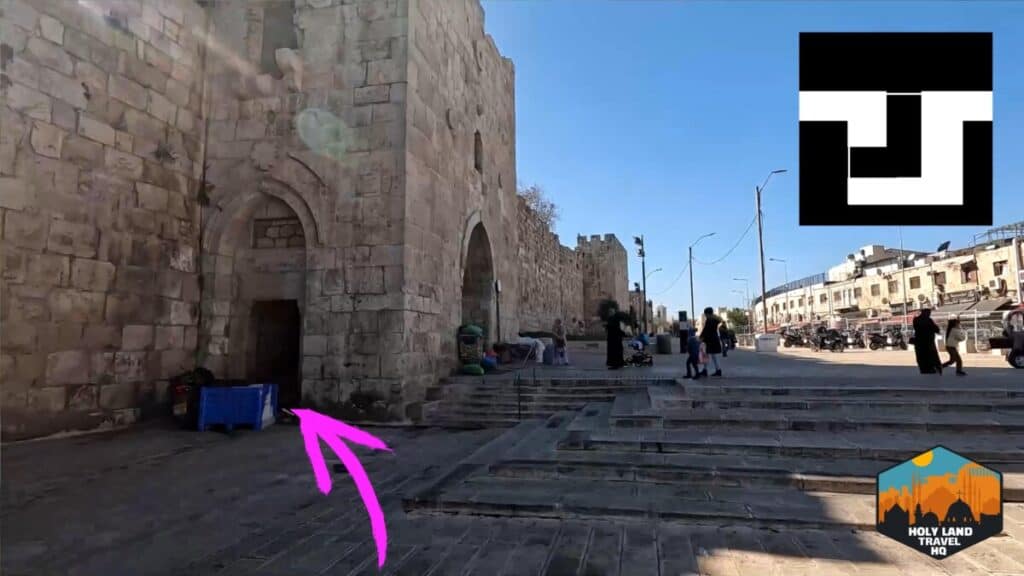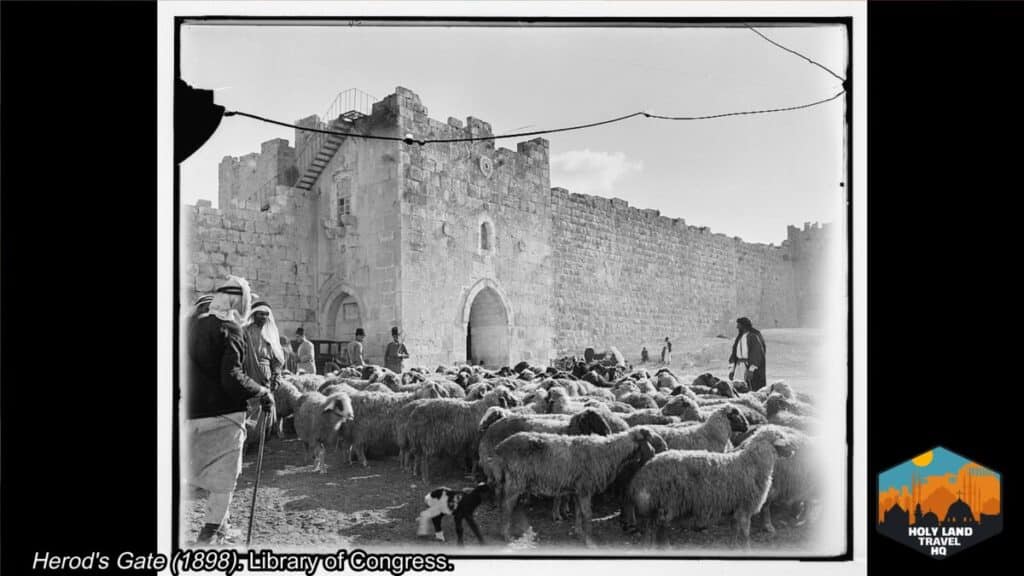- Gates Main
- Jaffa Gate
- Zion Gate
- Dung Gate
- East Gate (also known as Golden Gate)
- Lion’s Gate
- Herod’s Gate
- Damascus Gate
- New Gate
Location of Herod’s Gate.

Herod’s Gate is located on the eastern section of the north wall. It was constructed in 1539 AD by the Ottomans as part of Suleiman the Magnificent’s massive city wall and gate project. Prior to this, there was a gate located here as far back as at least the early Islamic period. The primary function of the gate is to provide access to the Muslim Quarter’s Bab Hutta neighborhood.
What is the Muslim name for Herod’s Gate?

Muslims refer to the gate as Bab As-Sahira (باب الساهرة), or the ‘Watchful Gate,’ which is the name of the Muslim cemetery of the same name that sits across the street from the gate. Sahira has several meanings in Arabic, the two most relevant meanings are 1) a desert, and 2) a land in which people do not slumber but stay awake.
The second definition is probably the most relevant because this cemetery is in the area where the Koran states the resurrection of the dead will happen.
What is the Hebrew name for Herod’s Gate?
The Jews refer to the gate as Sha’ar Ha’Perakhim (שַעַר הַפֶרַחִים), or the ‘Gate of the Flowers.’ Some believe that this name is derived from the flower depicted on the façade of the gate above the passageway. However, Dung Gate has a similar flower over it as well. Rather, it’s generally thought that the name of the gate in Arabic was corrupted over time from As-Sahira to Az-Zahra, which means flower in Arabic.
What is the Christian name for Herod’s Gate?
The Christian name is Herod’s Gate after Herod Antipas, King Herod’s son. This is because it was once believed that while in Jerusalem for the Passover at the time of Christ’s Crucifixion, Herod Antipas stayed at his residence which was located on the north side of the Antonia Fortress.
A crusader church once stood on the grounds where Herod’s residence was thought to have been. Today the Monastery of St. Nicodemus sits on the site, just north of Station 1 of the Via Dolorosa. Herod’s Gate offers direct access to the Via Dolorosa and Station 1 from the north.
Design of Herod’s Gate.

Originally Herod’s Gate was designed much like the other Ottoman gates, with a 90-degree turn. The outside entrance to the gatehouse would have been along on the left side of the gate. In 1875, the gatehouse was renovated and a straight passthrough was constructed.
Some history.

Herod’s Gate is a simple gate and typically does not have the traffic or the interest as other gates. A few things to note though. In 1099, the Crusaders breached the northern wall about 60 or 70 meters east of where Herod’s Gate is today. This area is flat and offered a suitable pathway for siege works to be moved to the wall. With Jerusalem being surrounded on three sides by valleys, the north side of the city was the most logical option for invading armies.
By the 1880s, the gate was also known as the Sheep Gate because of a weekly sheep market that occurred outside the gate.
References:
https://historicalsitesinisrael.com/en/herods-gate-jerusalem
https://madainproject.com/herods_gate
Matev, Ami. “One Square Kilometer: The Old City – A Guide to the Sites. 2015. Old City Press.

